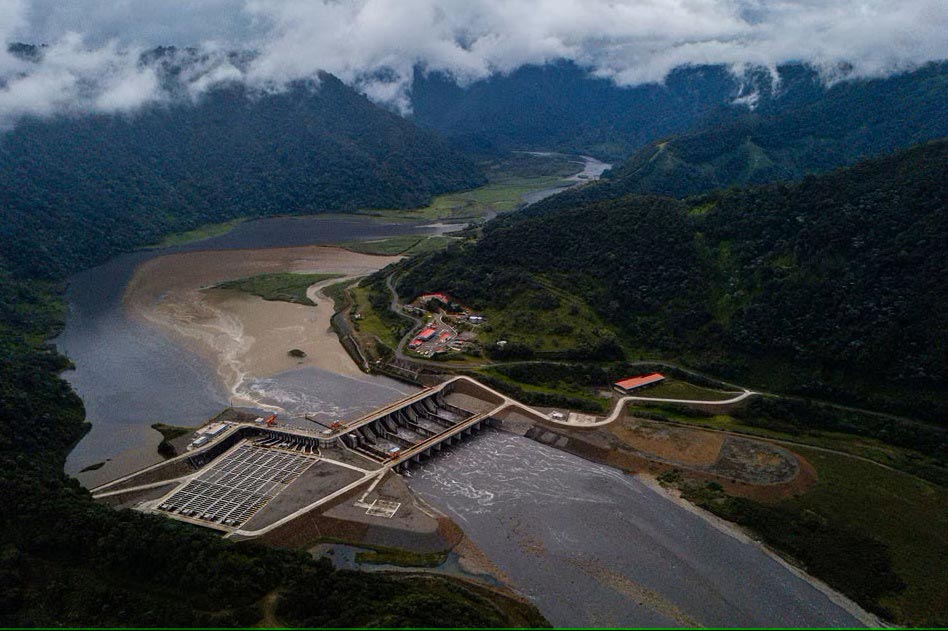In recent years, Ecuador has been grappling with the ominous specter of electricity blackouts, a crisis that threatens to plunge the nation into darkness and disrupt its economic stability. While the immediate future may not involve electricity rationing, the country faces increasing challenges that could worsen this precarious situation in the coming months.
The last major power outage Ecuadorians endured dates back to 2009, but recent developments are raising concerns about the possibility of new blackouts.
A pivotal factor contributing to this predicament is the shifting climate patterns in Ecuador. The customary onset of the annual drought in October has been unexpectedly moved up to September, and experts predict it will be more severe than in previous years. This drought directly impacts hydroelectric power generation, which heavily relies on water reservoirs. To mitigate this crisis, the government has emphasized the need to secure emergency electricity resources, approximately 300 to 400 megawatts. However, these plans have not yet materialized.
From surplus to shortage
As of now, electricity rationing is off the table, and there will be no power cuts until at least November 2023. What happens beyond that date remains uncertain, hinging on how swiftly new electricity generation can be brought online. Gonzalo Uquillas, the manager of the Electric Corporation of Ecuador, assures the public that every effort is being made to avert rationing, yet he cannot offer an absolute guarantee.
Several key factors intertwine to create this electricity crisis in Ecuador, unraveling the progress made in the past. Between 2007 and 2017, Ecuador invested a substantial $11.274 billion in expanding its electricity infrastructure, primarily through Chinese financing. This investment led to a surplus of electricity production, ensuring ample supply. However, the opaque and costly nature of Chinese loans has raised concerns.
During this period, Ecuador constructed 14 hydroelectric plants, including San Francisco, Mazar, Ocaña, and more, alongside nine thermoelectric plants. These efforts effectively doubled the country’s installed capacity from 4,070 megawatts in 2006 to 8,036 megawatts in 2017. This surplus was a promising achievement.
Unfortunately, the surge in demand for electricity in Ecuador has outpaced these accomplishments. Authorities report that electricity demand has skyrocketed to unprecedented levels, reaching 23,910 gigawatts/hour between January 1 and September 26, 2023, signifying a 13% increase compared to the same period in 2022. To meet this demand, Ecuador should ideally add 500 new megawatts annually, a target it has been unable to achieve.
The country’s efforts to bring new generation plants online have been stymied by delays and bureaucratic hurdles. While ten power generation plants were slated for operation between 2020 and 2023, only two have been inaugurated so far—the 49-megawatt Sarapullo hydroelectric plant and the 50-megawatt Huascachaca wind plant. The contracting processes for other projects, like Villonaco III and the Aromo photovoltaic plant, faced significant delays, with contracts signed only in March and July 2023, respectively. Furthermore, the 500-megawatt contract for the Non-Conventional Energy Block remains unsigned.
Electricity imports may disappear
The suspension of a trust to prioritize and guarantee payments for private companies investing in electricity generation, as decided by the Constitutional Court, has made it even more challenging to initiate new projects. This move has jeopardized $1.2 million in potential investments in the electricity sector.
Another critical issue lies in Ecuador’s thermoelectric park, which boasts a capacity of 1,884 megawatts. However, approximately 600 megawatts of this capacity remain permanently offline, either due to obsolescence or neglect in maintenance. Authorities have initiated a plan to recover this dormant capacity, but it remains a formidable challenge.
To compound these woes, Ecuador has been forced to resort to costly electricity imports from Colombia, a strategy adopted to alleviate its power shortfall. In 2022 alone, this import initiative cost the nation approximately $200 million. Furthermore, starting in September 2023, Ecuador increased its electricity purchases from Colombia at a weekly cost of $20 million. However, this reliance on Colombian electricity is fraught with uncertainty, as Colombia itself anticipates difficulties in supply due to its impending drought.
Future outlook
Ecuador’s electricity crisis looms ominously, threatening to disrupt the nation’s stability and economic progress. The complex interplay of factors, including increased demand, delayed generation projects, and reliance on imports, has left the country vulnerable.
The government’s efforts to secure emergency electricity resources and address the issues in its thermoelectric park are steps in the right direction, but the road ahead remains uncertain and fraught with challenges.
As Ecuador navigates these troubled waters, its ability to overcome these hurdles and ensure a stable power supply for its citizens will be closely watched.


0 Comments